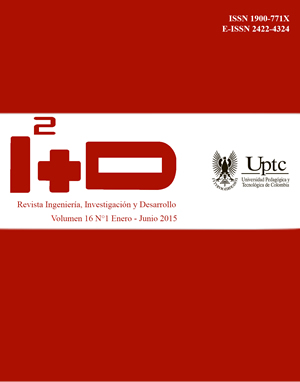GaN-based Power amplifiers for microwave applications

Abstract
This paper presents a discussion about the design strategies of different kind of power amplifiers for RF/Microwave appli- cations, such as the tuned load power amplifier, class F, class F-1 and Doherty. Furthermore, it is shown the continuous wave characterization of the amplifiers above mentioned. A comparison between the obtained results, in terms of gain, efficiency and output power is presented.
Keywords
power amplifiers (PA), harmonic control, efficiency, gain, wireless communication
References
- Camarchia, V. et al. (2013). 7 GHz MMIC GaN Doherty power amplifier with 47% efficiency at 7 dB output back-off. Microwave and Wireless Components Letters, IEEE 23 (1), 34-36. DOI:http://
- http://dx.doi.org/10.1109/LMWC.2012.2234090
- Colantonio, P., et al. (2004). HF class F design guidelines. In 15th International Conference on Microwaves, Radar and Wireless Communications MIKON-2004,IEEE. DOI:http://dx.doi.org/10.1109/MIKON.2004.1356848
- http://dx.doi.org/10.1109/MIKON.2004.1356848
- Colantonio, P., et al. (2009). High Efficiency RF and Microwave
- Solid State Power Amplifiers. UK: John Wiley and Sons.
- Cripps, S. C. (1999). RF power amplifiers for wireless communications. Norwood, USA: Artech House.
- Gao, S. et al. (2006). Microwave class-F and inverse class-F power amplifiers designs using GaN technology and GaAs pHEMT. In 36th European Microwave Conference, IEEE. DOI:http://dx.doi.org/10.1109/EUMC.2006.281473
- Isaza, A. M. & Cadavid, A. M. O. (2009). El TLC y el sector de las telecomunicaciones en Colombia: panorama actual. Perfil de Coyuntura Económica,(5), 72-93.
- Moon, J. et al. (2012). Behaviors of Class-F and Class F-1 -Amplifiers. IEEE Transactions on Microwave Theory and Techniques, 60(6), 1937-1951. DOI:http://dx.doi.org/10.1109/TMTT.2012.2190749
- Moreno-Rubio, J. et al. (2014). Harmonic tuned RF/microwave high efficiency power amplifier design accessing the intrinsic drain. In Central America and Panama Convention (CONCAPAN XXXIV) IEEE.
- Ooi, S. F. et al. (2004). High efficiency class-F power amplifier design. In High Frequency Postgraduate Student Colloquium, 2004, IEEE. DOI:http://dx. doi.org/0.1109/HFPSC.2004.1360365
- Park, H.-C. et al. (2006). High-efficiency class-F amplifier design in the presence of internal parasiticcomponents of transistors. In 36th EuropeanMicrowave Conference, IEEE. DOI:http://dx.doi.org/ 10.1109/EUMC.2006.281249
- Pengelly, R. S. et al. (2012). A review of GaN on SiC high electron-mobility power transistors and MMICs. IEEE Transactions on Microwave Theory and Techniques,60(6), 1764-1783. DOI:http://dx.doi.
- http://dx.doi.org/10.1109/TMTT.2012.2187535
- Pozar, D. M. (2000). Microwave and RF design of wireless systems. UK: John Wiley & Sons, Inc.
- Rubio, J. M. et al. (2011). A 22W 65% efficiency GaN Doherty power amplifier at 3.5 GHz for WiMAX applications. In Workshop on Integrated Nonlinear Microwave and Millimetre-Wave Circuits
- (INMMIC)IEEE. DOI:http://dx.doi.org/10.1109/INMMIC.20 11.5773332.
- Rubio, J. J. M. et al. (2014). Estrategia de dise-o para un amplificador de potencia de alta eficiencia Clase F a 1.9 GHz. En Memorias del X Congreso Internacional de Electrónica y Tecnologías de Avanzada, Pamplona.
- Rubio, J. J. M. et al. (2013). El amplificador de potencia de carga sintonizada. Revista Colombiana de Tecnologías de Avanzada RCTA, 2(22).
Downloads
Download data is not yet available.